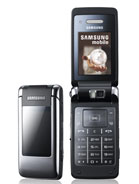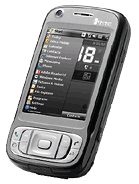Mobile phone evolution: Story of shapes and sizes
Story of shapes and sizes
Clamshells
Clamshells used to be a huge hit – they look all but a dying breed today. The form factor specifics make them unfit for the current market and we can hardly see this trend reversing anytime soon. Screen size is limited to a maximum of half the phone’s height and they are just too thick. And as we’ll see in a while, big screens and slim profiles are what modern phones are all about.
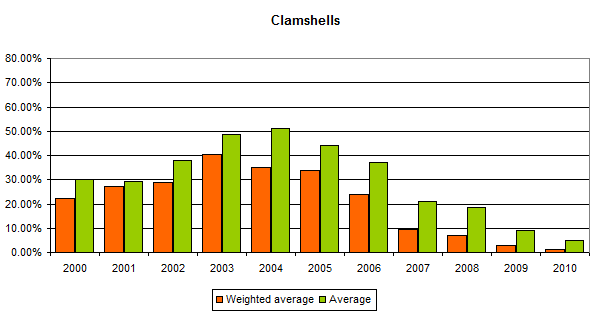
With all that in mind, we cannot help but feel that clamshells will have the same fate as flip down phones and will eventually become extinct.
Flip down phones have been around since the dawn of mobile phone days and for quite a few years even hanged near the top of the food chain. From Ericsson T10s in 1999 to the dual-keyboard-and-touchscreen Sony Ericsson P990 (it’s no coincidence that the manufacturer is the same – the Swedes were certainly good at those) flip-down phones were ruling the lands, before a rather sharp and unfortunate turn of events saw them rapidly disappear during an Ice Age. Their own creator was giving them the cold shoulder – and a rather chilly shoulder at that.
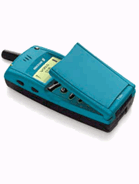

Ericsson T10s • Sony Ericsson P990
First it was the T-series candy bars, the T-rexes of the flock. Then Sony Ericsson went with the bar form-factor for the P1 and that was the last nail in their coffin. The flip-down had a brief cameo appearance later on with the Sony Ericsson W350 but that didn’t exactly set the world alight, and ended with a puff rather than a bang.
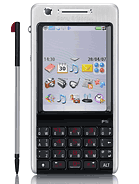
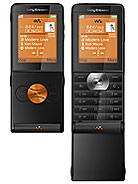
Sony Ericsson P1 • Sony Ericsson W350
Back to the regular clamshells, there was a time, when they accounted for almost half of all phones (and even more than half in 2004). However, once the Motorola StarTAC days were over they were never able to regain their high-end status as the graph clearly shows. Weighted averages are always less than absolute averages, which indicates that there were always more relatively unpopular clamshells (entry-level, mid-range) than there were popular ones (high-end).
Of course the revolutionary Motorola RAZR V3 and the host of sequels released helped the clamshells claim back quite a lot of ground. With some help from other legendary devices like the Panasonic VS3 and VS6, the Moto RAZR did make 2005 the year of the fold.
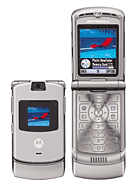
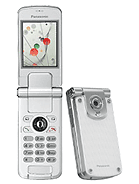
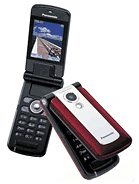
Motorola RAZR V3 • Panasonic VS3 • Panasonic VS6
Unfortunate for clamshell fans and twice as unfortunate for Motorola - who at one point thought they can live forever by just releasing the next RAZR update every few months – it was all downhill from there.
The Samsung G400 Soul was the last memorable addition to the clamshell ranks. But even its premium finish and great features could not change the fact that clamshells had forever turned into mid-range phones (usually with distinctly female appeal).
Sliders
Sliders at one point seemed the answer to the problems that clamshells tried to deal with. Big screen and keypad can fit in a body of a relative small surface, plus you get the keys protected against accidental presses.
But unfortunately, just like clamshells, sliders add a few millimeters around the waistline.
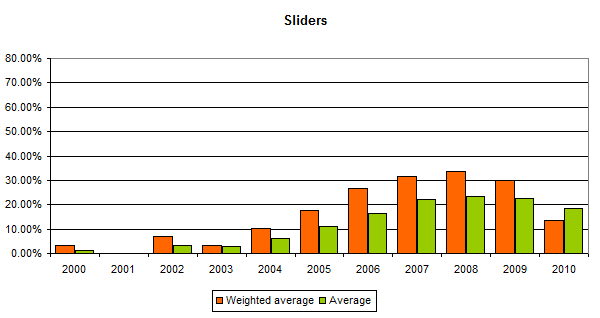
Sliders were off to a very slow start, the form factor only gaining some popularity around 2004. However they took the world by storm after that and some of the most interesting devices ever released on the market fall in the slider category. That’s easily confirmed by a quick glance at the graph – the weighted average has an advantage over the absolute average in all years prior to 2010.
As a matter of fact, 4 of the 6 most popular handsets of all time in our database are sliders. The legendary N95 got near-iconic status for being the first true all-in-one smartphone. The others are the N96, Nokia’s first touch-driven flagship N97 and the XPERIA X1 – Sony Ericsson’s first PocketPC.
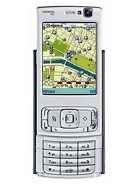
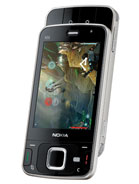

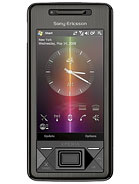
Nokia N95 • Nokia N96 • Nokia N97 • Sony Ericsson XPERIA X1
The thing with both clamshell and sliders is that once the thickness fell to an all-time low at under 10 mm, they started to put back weight thus losing their edge against competitors.
Unlike clamshells though, sliders are here to stay, or at least they have the potential to last quite a while longer. The reason for this is their evolution to side-sliding QWERTY messengers. Those too had a hard time taking off (the dark times of HTC TyTNs), but are now among the most compelling models in our database – especially with the all-you-can-eat messaging plans, always online social networking and push email.
Not all users need a hardware QWERTY keyboard, so while this twist of events kept the sliders in the game, they were confined to a niche of their own. Their relative popularity might remain high, but in terms of sheer numbers they have no chance of reaching the 20+ market share they had in 2007-2008.
Looking at the chart, some of you might think that 2010 has also dealt a major blow on their popularity as their weighted average stands at the modest 13.4 percent. However we are only at the midway point of a year that hasn’t seen many major slider announcements.
The rumored arrival of devices such as Nokia N9 and E7, and the QWERTY-enabled Samsung Galaxy S may as well fix things up for the sliders and solidify them as the third largest (in terms of number of the devices released) and second most-popular form factor. . Not to mention we’re expecting Windows Phone 7 smartphones later this year and as things look, they might use a QWERTY sibling on their side.
There’s a lot to be said about QWERTY equipped handset as a whole, so we’ve prepared a dedicated chart for them too. We’ll present it further down.
Reader comments
- Teres4
- 05 May 2023
- LdI
We need 2023 version of this arcticle
- mariws
- 09 Sep 2017
- 8BI
Reading this, 7 years later, it's amazing. You rock guys.
- steve
- 04 Dec 2013
- sR3
I had to laugh at the thing about 5" phones not being normal
